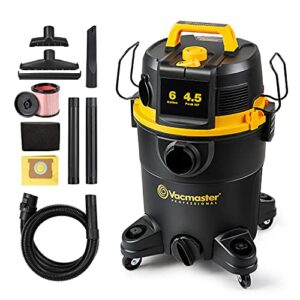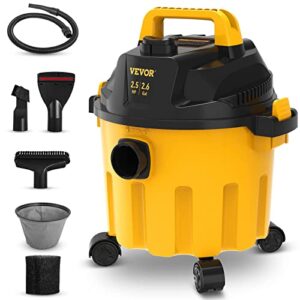How to Use a Shop Vacuum Effectively
Key Takeaways
- Always use a filter to prevent clogs and protect the motor from damage
- Regularly clean or replace filters to maintain optimal performance
- Empty the collection canister frequently to prevent restricted airflow and foul odors
Shop vacuums are versatile tools that can be used for a variety of cleaning tasks. Whether you are tidying up your garage, workshop, or home, knowing how to use a shop vacuum effectively can save you time and effort. In this article, we will explore the best practices for using a shop vacuum to ensure optimal performance and longevity.
1. Always Use a Filter
One of the key best practices for using a shop vacuum is to always use a filter. Filters are essential for preventing clogs and protecting the motor from damage. When dealing with dry messes, it is important to use a filter specifically designed for dry debris. This will help to trap dust and small particles, preventing them from entering the motor and causing damage. For wet spills, on the other hand, it is recommended to remove the filter as it is not designed to handle liquids.
2. Regularly Clean or Replace Filters
To maintain optimal performance, it is crucial to regularly clean or replace the filters in your shop vacuum. Over time, filters can become clogged with dirt and debris, reducing suction power. Refer to the shop vac’s manual for specific instructions on how to clean or replace the filters. Some filters can be washed with water, while others may need to be replaced entirely. By keeping the filters clean, you’ll ensure that your shop vacuum continues to operate efficiently.
3. Empty the Collection Canister Frequently
Another important practice is to empty the collection canister frequently. Depending on the size of the canister and the amount of debris being collected, it may need to be emptied multiple times during a cleaning session. When the canister is full, it can restrict airflow and reduce suction power. Additionally, leaving debris in the canister for an extended period can lead to foul odors and potential damage to the vacuum. Therefore, it is best to empty the canister as soon as it reaches a significant level.
4. Store and Clean Accessories Properly
Shop vacuums often come with a range of accessories and attachments to help with different cleaning tasks. It is important to store these accessories properly when not in use to prevent loss or damage. Additionally, cleaning the attachments after each use will help to remove any trapped debris and maintain their effectiveness. Taking care of the accessories will ensure that you have the right tools for the job and that they continue to perform optimally.
5. Maximize Efficiency with the Right Tools
To use a shop vacuum effectively, it is important to use the right tools for the task at hand. Different cleaning tasks may require specific attachments or accessories. For example, using a brush attachment can be effective for cleaning upholstery, while a crevice tool is ideal for reaching tight spaces. Additionally, using the appropriate filters and collection bags for specific tasks can help to maximize efficiency and maintain the cleanliness of your shop vacuum.
6. Follow Manufacturer’s Instructions
Lastly, always refer to the manufacturer’s instructions and recommendations when using a shop vacuum. Each model may have specific guidelines that you should follow to ensure optimal performance and safety. Understanding the unique features and capabilities of your shop vacuum will help you use it effectively and prolong its lifespan.
Conclusion
Using a shop vacuum effectively involves regular maintenance, proper cleaning, and using the right tools and attachments for the job. By following the best practices outlined in this article, you can ensure that your shop vacuum performs at its best and lasts for years to come.
Related Websites:
FAQs:
Q: Why is it important to understand the proper usage techniques of a shop vacuum?
Understanding proper usage techniques maximizes the vacuum’s performance, ensuring effective cleaning and prolonging its durability.
Q: What are the key components of a shop vacuum?
A shop vacuum consists of a motor, hose, and collection tank. It is crucial to refer to the product manual for specific instructions.
Q: How do I prepare a shop vacuum before using it?
Before using a shop vacuum, ensure the collection tank is clean and the hose is properly attached. Also, select the appropriate filter for the task at hand.
Q: What are some effective usage tips for a shop vacuum?
Here are some tips:
1. Select the right attachments for specific tasks.
2. Maintain a firm grip and move the vacuum smoothly across different surfaces.
3. Adjust the suction power based on the task at hand.
4. Handle different debris types properly by emptying the collection tank and cleaning the filter after each use.
Q: What safety considerations should I keep in mind while using a shop vacuum?
When using a shop vacuum, wear appropriate personal protective equipment, keep it away from water sources and electrical hazards.






